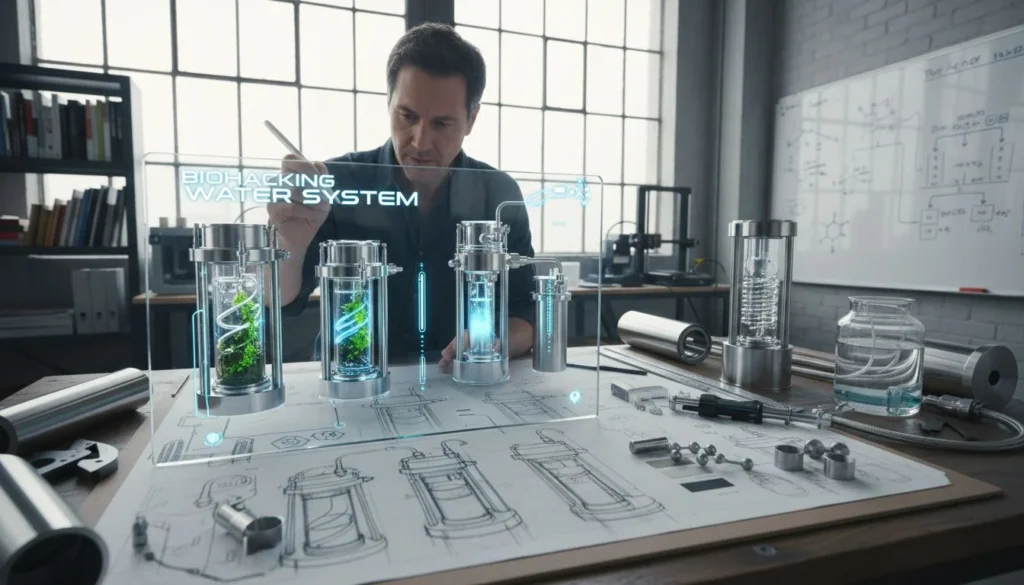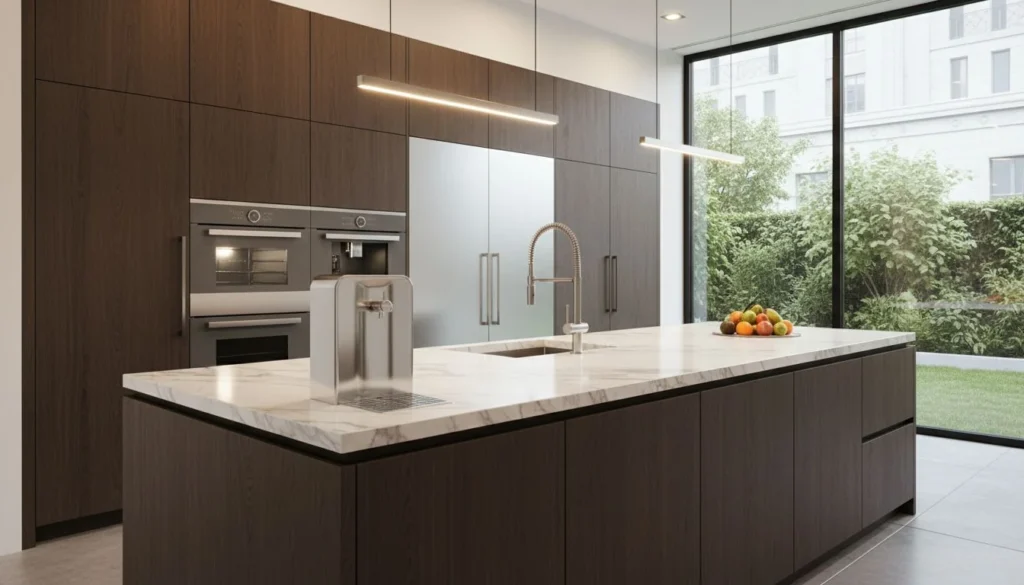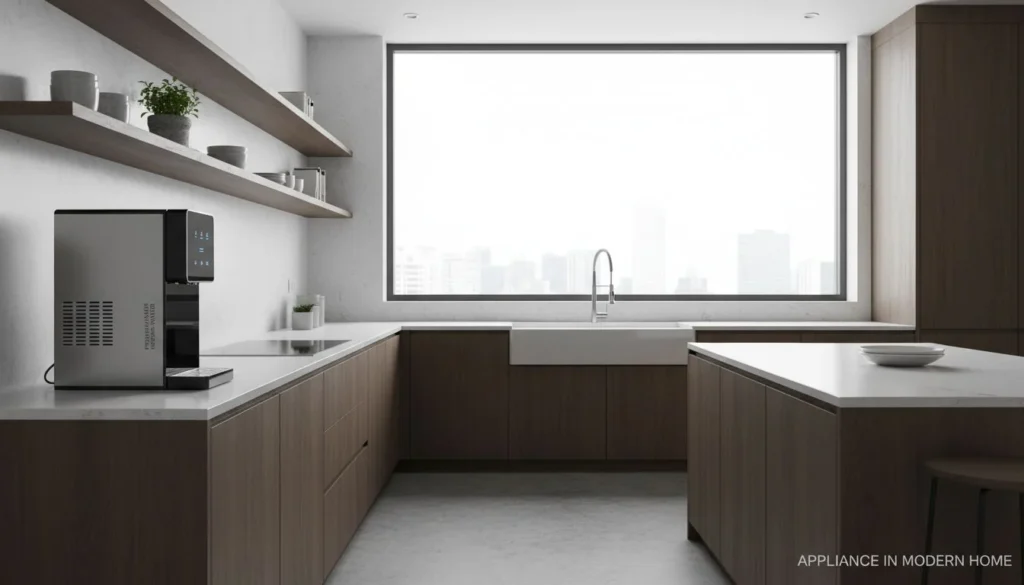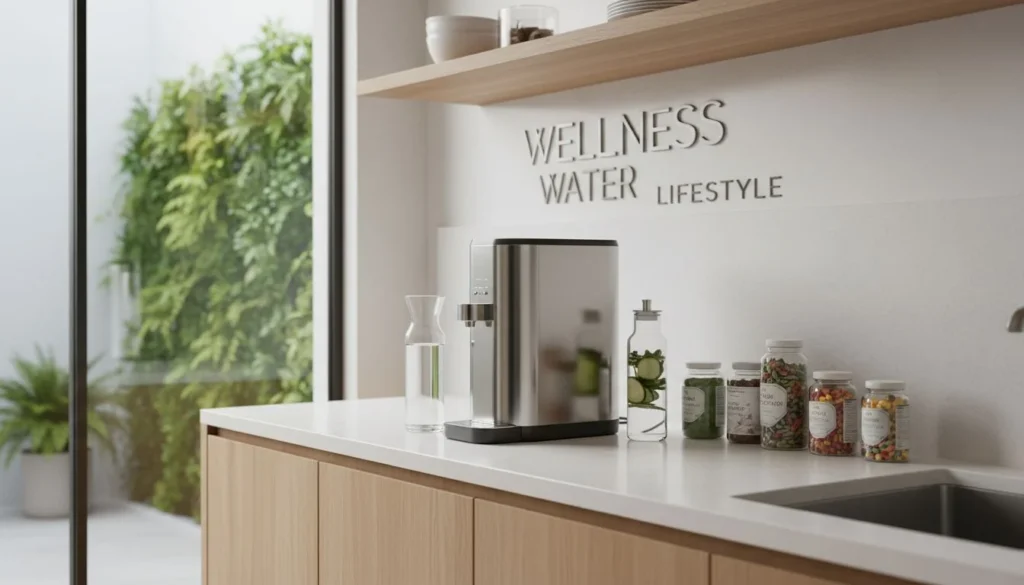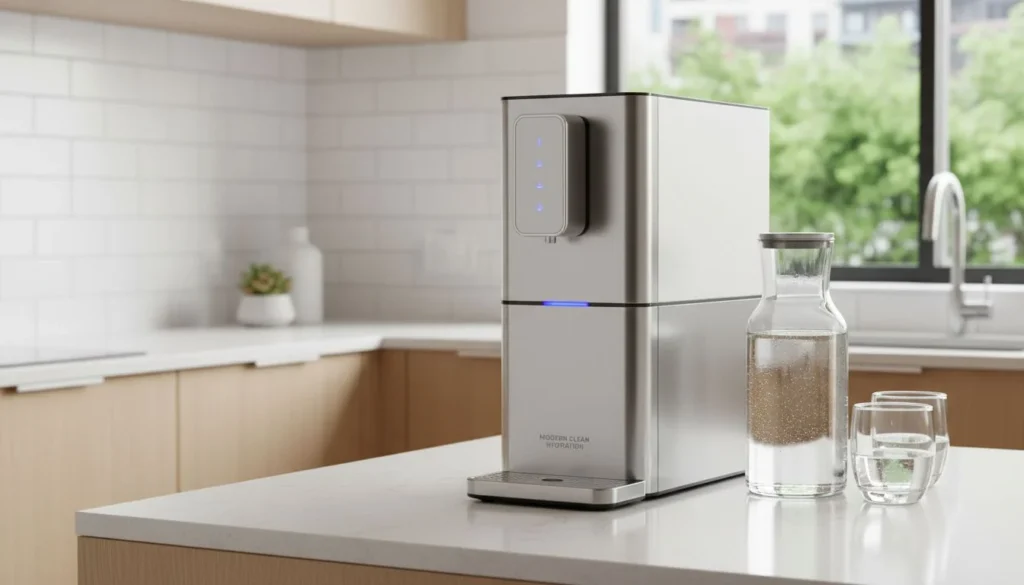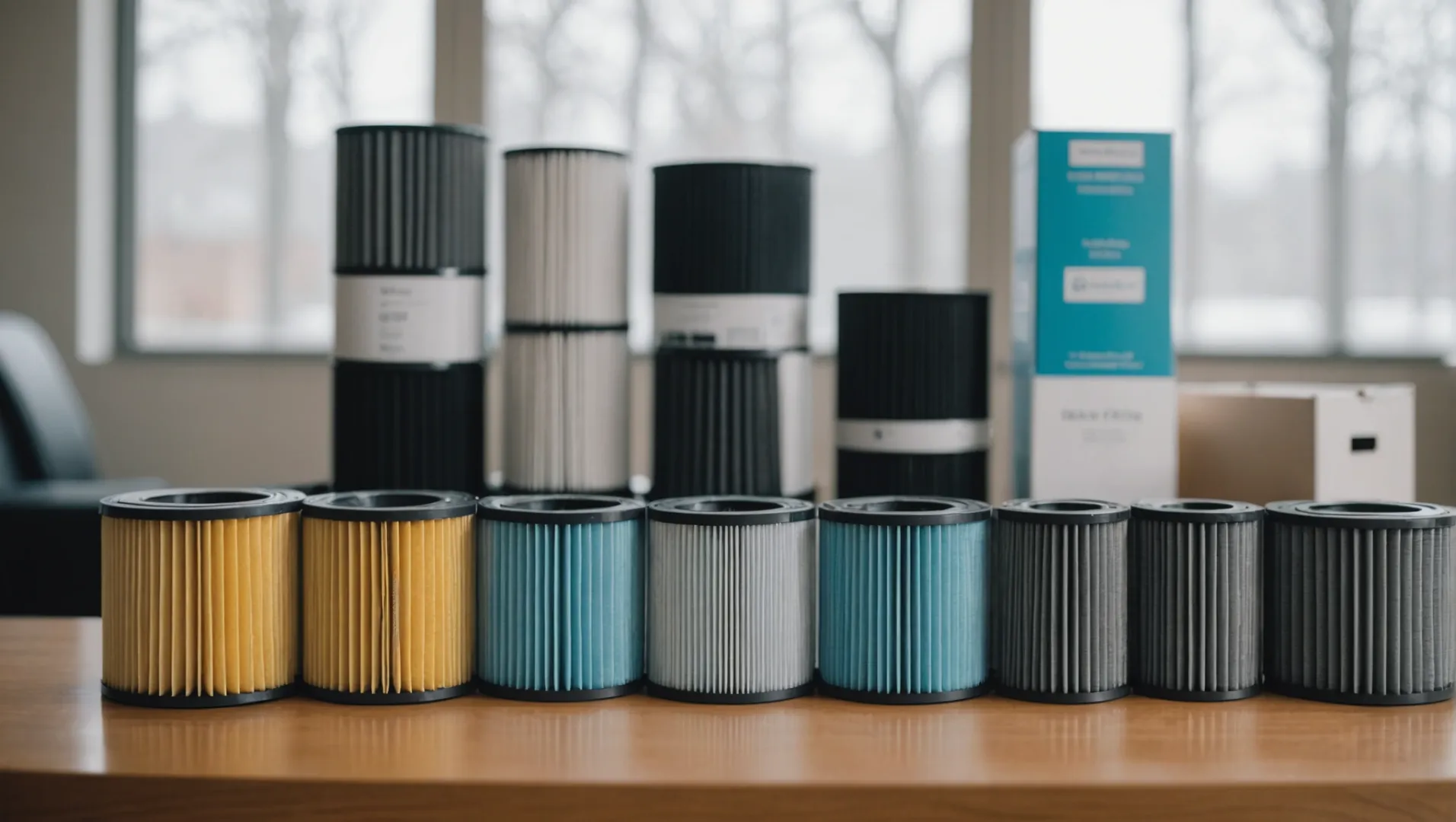
Navigare nel mondo dei filtri dell'aria può essere scoraggiante, ma non deve esserlo!
La scelta del giusto filtro dell'aria dipende dagli inquinanti specifici che si desidera eliminare e dagli scenari a cui si vuole far fronte. Comprensione MERV Le valutazioni e i tipi di filtro, come HEPA o a carboni attivi, aiutano a prendere decisioni informate per un'efficace purificazione dell'aria.
Se le nozioni di base sui filtri dell'aria sono essenziali, un'immersione più approfondita in scenari specifici come il controllo degli odori degli animali domestici o la gestione del rischio di muffa rivela soluzioni su misura. Continuate a leggere per scoprire i consigli pratici e le intuizioni degli esperti per scegliere i filtri migliori per le vostre esigenze.
I filtri HEPA catturano almeno il 99,97% di particelle di 0,3 micron.Vero
I filtri HEPA sono altamente efficienti e catturano la maggior parte delle particelle fini, migliorando la qualità dell'aria.
Cosa sono MERV Valutazioni e perché sono importanti?
Comprendere il significato di MERV La valutazione è fondamentale per scegliere i filtri dell'aria giusti per la casa o l'ufficio.
MERV Le classificazioni, che vanno da 1 a 20, misurano la capacità di un filtro dell'aria di catturare le particelle. Più alto MERV I valori indicano una filtrazione più fine, che trattiene efficacemente particelle più piccole come polvere, polline e persino batteri, migliorando così in modo significativo la qualità dell'aria interna.
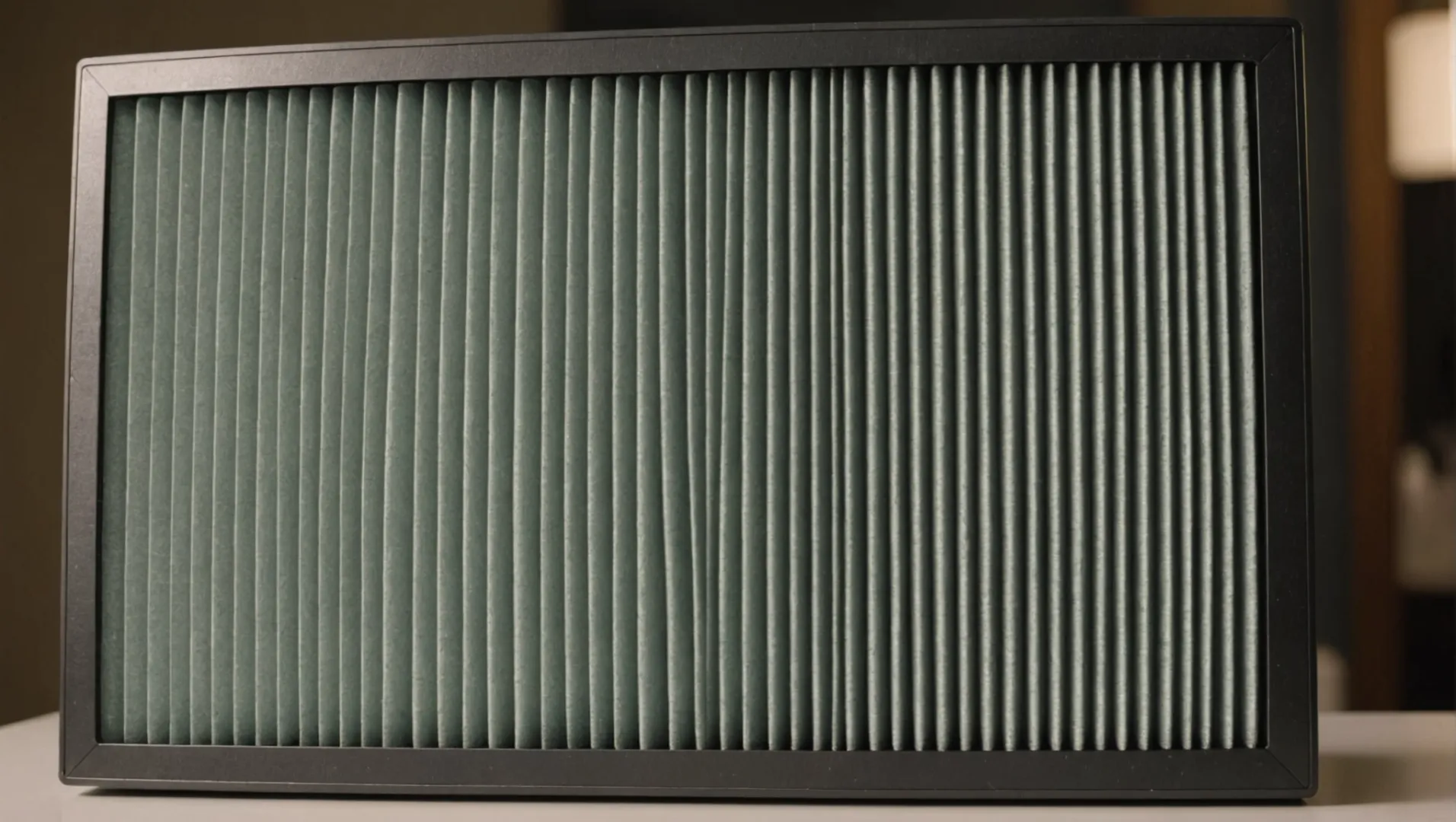
Comprensione MERV Valutazioni
MERV è l'acronimo di Minimum Efficiency Reporting Value. Si tratta di uno standard che valuta l'efficacia complessiva dei filtri dell'aria. La scala va da 1 a 20, con numeri più alti che indicano una maggiore capacità di catturare piccole particelle. Ad esempio, un filtro con un valore MERV valutazione1 1 è in grado di catturare le particelle più grandi, come le fibre dei tappeti, mentre un filtro con una valutazione di 13 può catturare particelle di soli 0,3 micron, come polvere, polline e alcuni batteri.
Come MERV Le valutazioni hanno un impatto sulla qualità dell'aria
Utilizzando un filtro con un'appropriata MERV può migliorare significativamente la qualità dell'aria interna. I filtri di classe superiore sono essenziali per gli ambienti in cui la purezza dell'aria è fondamentale, come gli ospedali o le case con persone allergiche. Tuttavia, è importante bilanciare l'efficienza di filtrazione con il flusso d'aria; un filtro troppo restrittivo può ostacolare il flusso d'aria e ridurre l'efficienza del sistema HVAC.
Tabella: MERV Valutazioni e tipi di particelle
| MERV Valutazione | Catture |
|---|---|
| 1-4 | Polline, acari della polvere |
| 5-8 | Spore di muffa, spray per capelli |
| 9-12 | Legionella, polvere di piombo |
| 13-16 | Batteri, particelle di fumo |
| 17-20 | Virus, polvere di carbonio |
Applicazioni pratiche di MERV Valutazioni
Quando si sceglie un filtro dell'aria, bisogna considerare le esigenze specifiche del proprio ambiente. Ad esempio:
- Case con animali domestici possono beneficiare di filtri con un MERV valutazione2 di almeno 5 per catturare la forfora degli animali domestici.
- Famiglie con bambini piccoli dovrebbero prendere in considerazione filtri di classe 13 o superiore per rimuovere efficacemente batteri e allergeni.
- Aree soggette al fumo degli incendi può richiedere filtri con un MERV di 14 o più per intrappolare le particelle di fumo e migliorare la qualità dell'aria.
La comprensione di questi aspetti aiuta ad adattare la scelta alle esigenze specifiche, garantendo sicurezza e comfort.
Le classificazioni MERV vanno da 1 a 20.Vero
Le classificazioni MERV misurano l'efficienza del filtro dell'aria su una scala da 1 a 20.
Le classificazioni MERV più elevate riducono l'efficienza del sistema HVAC.Vero
I filtri con un MERV elevato possono limitare il flusso d'aria, compromettendo i sistemi HVAC.
In che modo i diversi tipi di filtro dell'aria agiscono contro gli inquinanti specifici?
Scoprite come i vari tipi di filtri dell'aria affrontano gli inquinanti specifici per garantire un'aria interna più pulita e sana.
I diversi tipi di filtri dell'aria sono progettati per combattere inquinanti specifici. I filtri HEPA eccellono nella cattura di particelle fini come polvere e allergeni, mentre i filtri a carbone attivo sono ideali per eliminare odori e composti organici volatili (VOC). La scelta del filtro giusto implica la comprensione di queste funzioni e la loro corrispondenza con gli inquinanti che si desidera eliminare.

Capire le basi dei filtri dell'aria
I filtri dell'aria sono essenziali per mantenere la qualità dell'aria interna rimuovendo i contaminanti dall'aria. Variano molto in termini di design, materiali e agenti inquinanti. Qui analizzeremo come i diversi tipi di filtri dell'aria funzionano per affrontare efficacemente gli inquinanti interni specifici.
Filtri HEPA: Catturare le particelle fini
I filtri HEPA (High-Efficiency Particulate Air) sono noti per la loro capacità di trattenere almeno il 99,97% di particelle di dimensioni pari a 0,3 micron. Sono particolarmente efficaci contro polvere3polline, spore di muffa e forfora di animali domestici. Ciò rende i filtri HEPA una scelta eccellente per le case in cui sono presenti persone allergiche o che desiderano migliorare la qualità generale dell'aria.
Filtri a carbone attivo: Assorbimento di odori e sostanze chimiche
I filtri a carbone attivo sono composti da materiale di carbonio trattato per essere altamente poroso. Questo design consente loro di assorbire gas e odori, compresi i COV emessi da prodotti domestici come vernici e prodotti per la pulizia. Questi filtri sono perfetti per gli ambienti in cui il controllo degli odori è fondamentale, come le case con animali domestici o fumatori.
Filtri antibatterici: Obiettivo: la crescita microbica
Per chi è preoccupato dalla crescita di microbi, come muffe o batteri, i filtri antibatterici rappresentano una soluzione specifica. Questi filtri spesso incorporano materiali trattati con agenti antimicrobici che neutralizzano i microrganismi nocivi, riducendo così il rischio di problemi di salute legati alle muffe.
Filtri ultravioletti (UV): Neutralizzare i germi
I filtri UV utilizzano la luce ultravioletta per uccidere o inattivare microrganismi come batteri e virus. Sebbene non siano efficaci per la rimozione del particolato, sono un sistema supplementare per migliorare la purificazione dell'aria in ambienti in cui l'esposizione ai germi è un problema, come gli ospedali o le case durante la stagione influenzale.
Combinazione di filtri per la massima efficacia
Molti purificatori d'aria moderni combinano diversi tipi di filtro per affrontare una gamma più ampia di inquinanti. Ad esempio, un'unità può essere dotata sia di filtri HEPA che di filtri a carboni attivi, per offrire una protezione completa contro particolato e odori. Quando scegliete un purificatore d'aria, prendete in considerazione i modelli che consentono questa personalizzazione per soddisfare le vostre esigenze specifiche.
Conoscendo i ruoli distinti che ciascun tipo di filtro svolge nella purificazione dell'aria, è possibile prendere decisioni informate sulle opzioni più adatte alle proprie sfide ambientali.
I filtri HEPA catturano il 99,97% di particelle di 0,3 micron.Vero
I filtri HEPA sono progettati per trattenere le particelle fini, garantendo un'elevata qualità dell'aria.
I filtri a carbone attivo sono inefficaci contro i VOC.Falso
I filtri a carboni attivi assorbono efficacemente i VOC, riducendo gli odori e le sostanze chimiche.
Quali sono i filtri migliori per i proprietari di animali domestici preoccupati per gli odori?
Gli odori degli animali domestici possono essere persistenti e difficili da gestire. La scelta del giusto filtro dell'aria può fare una differenza significativa nel mantenere un ambiente domestico fresco.
Per i proprietari di animali domestici, i filtri più efficaci sono quelli che combinano il carbone attivo e l'HEPA 13. Il carbone attivo trattiene le molecole degli odori, mentre l'HEPA 13 cattura la forfora e i batteri presenti nell'aria, garantendo una casa più pulita e priva di odori.

Il ruolo del carbone attivo nel controllo degli odori
I filtri a carbone attivo sono molto efficaci nel controllare gli odori degli animali domestici. Funzionano intrappolando le molecole che causano gli odori sulla loro ampia superficie, neutralizzando efficacemente gli odori degli animali domestici. Questo è particolarmente vantaggioso per le famiglie con più animali domestici o con animali dall'odore intenso.
HEPA 13: un must per i proprietari di animali domestici
I filtri HEPA 13 sono rinomati per la loro capacità di catturare particelle minuscole, tra cui la forfora degli animali domestici e i batteri. Questo livello di filtrazione è fondamentale per i proprietari di animali domestici che vogliono garantire una gestione efficace di odori e allergeni. La combinazione di HEPA 13 e carbone attivo crea un potente duo contro gli inquinanti legati agli animali domestici.
Comprendere i limiti dei filtri di base
Sebbene i filtri di base siano in grado di rimuovere le particelle più grandi, spesso non sono in grado di gestire gli odori e gli allergeni più piccoli. I proprietari di animali domestici dovrebbero cercare filtri che indichino specificamente le capacità di controllo degli odori, come quelli con tecnologia del carbone attivo4.
Importanza della scelta del giusto fornitore di depuratori d'aria
La scelta di un fornitore di purificatori d'aria specializzato in prodotti ad alte prestazioni è fondamentale. L'elevata potenza del flusso d'aria e i bassi livelli di rumore aumentano l'efficienza dei filtri HEPA, garantendo una purificazione completa. Quando si sceglie un fornitore, bisogna considerare la sua esperienza nell'offrire diverse opzioni di filtri e la sua capacità di mantenere un elevato CADR (Clean Air Delivery Rate).
Fattori da considerare quando si acquistano i filtri
| Caratteristica | Importanza |
|---|---|
| Carbone attivo | Essenziale per neutralizzare gli odori degli animali domestici. |
| HEPA 13 | Cattura efficacemente la forfora e i batteri degli animali domestici. |
| Livello di rumore | La bassa rumorosità garantisce il comfort negli spazi abitativi. |
| Flusso d'aria | Per un filtraggio efficace è necessario un flusso d'aria elevato. |
Consigli pratici per mantenere una casa fresca
Una manutenzione regolare del purificatore d'aria, come la sostituzione e la pulizia tempestiva dei filtri, ne massimizza l'efficienza. È inoltre utile garantire una buona ventilazione e una pulizia regolare delle aree riservate agli animali domestici per integrare l'uso dei filtri dell'aria.
I filtri a carboni attivi neutralizzano efficacemente gli odori degli animali domestici.Vero
Il carbone attivo trattiene le molecole di odore, neutralizzando gli odori degli animali domestici.
I filtri di base sono sufficienti per gestire gli odori degli animali domestici.Falso
I filtri di base non hanno capacità di controllo degli odori rispetto a quelli avanzati.
Come possono i genitori garantire una qualità dell'aria sicura per i bambini a casa?
Creare un ambiente sicuro è fondamentale per la salute del bambino e la qualità dell'aria è un fattore importante. Ma come possono i genitori assicurarsi che l'aria respirata dal loro bambino sia pulita e sicura?
Per garantire una qualità dell'aria sicura per i bambini in casa, i genitori dovrebbero utilizzare purificatori d'aria con filtri HEPA 13 o 14 per rimuovere efficacemente le particelle PM2,5. Inoltre, mantenere una buona ventilazione, evitare di fumare in ambienti chiusi e pulire regolarmente le superfici può aiutare a mantenere un ambiente interno sano.
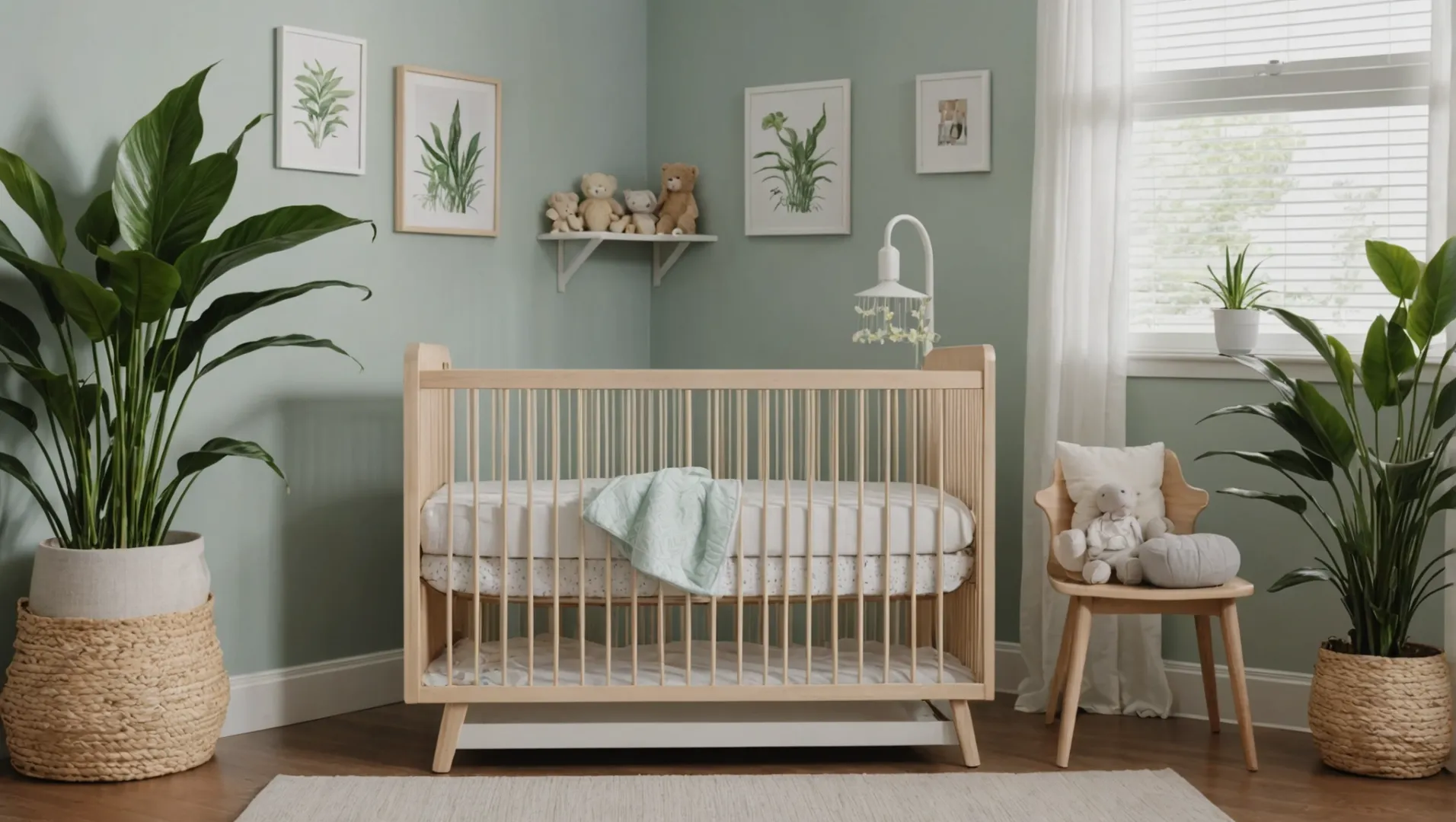
Conoscere gli inquinanti atmosferici e i loro effetti sui neonati
I bambini sono particolarmente vulnerabili agli inquinanti presenti nell'aria perché il loro sistema respiratorio è ancora in fase di sviluppo. Gli inquinanti interni più comuni sono gli acari della polvere, le spore della muffa, la forfora degli animali domestici e le particelle PM2,5, che possono esacerbare problemi respiratori come l'asma o le allergie. Conoscendo questi inquinanti, i genitori possono intraprendere azioni mirate per ridurne l'impatto.
Il ruolo dei filtri HEPA nella purificazione dell'aria
I filtri HEPA (High-Efficiency Particulate Air) sono famosi per la loro capacità di catturare particelle minuscole. Per i genitori preoccupati per il PM2,5, si consigliano i filtri HEPA 13 o addirittura HEPA 14, in grado di catturare fino al 99,97% di particelle sospese nell'aria di dimensioni pari a 0,3 micron. Questo li rende molto efficaci nel ridurre la presenza di inquinanti nocivi in casa.
Misure aggiuntive per garantire la sicurezza dell'aria
Mentre Filtri HEPA5 svolgono un ruolo significativo, ma fanno parte di una strategia più ampia per garantire aria pulita:
- Mantenere una buona ventilazione: Assicuratevi che la vostra casa sia ben ventilata aprendo le finestre quando la qualità dell'aria esterna lo consente.
- Pulizia regolare: Spolverare le superfici e aspirare con un aspirapolvere HEPA per ridurre al minimo l'accumulo di polvere.
- Evitare di fumare in ambienti chiusi: Il fumo contiene numerose sostanze chimiche nocive che possono rimanere nell'aria anche molto tempo dopo aver smesso di fumare.
- Piante da appartamento: Alcune piante, come le piante ragno e i gigli della pace, possono migliorare naturalmente la qualità dell'aria interna assorbendo gli inquinanti.
Scegliere il giusto depuratore d'aria
Quando si sceglie un purificatore d'aria, bisogna considerare fattori come le dimensioni della stanza e i livelli di rumore. Un dispositivo con un elevato CADR (Clean Air Delivery Rate) garantisce un'efficiente purificazione dell'aria senza un rumore eccessivo, essenziale per mantenere un ambiente tranquillo per il bambino. Consultare le recensioni e i confronti tra i modelli più quotati può essere utile al momento della scelta.
Monitoraggio e adeguamento in base alle esigenze
Infine, utilizzare monitor della qualità dell'aria interna per monitorare i livelli di inquinanti. In questo modo i genitori possono adattare le loro strategie in base alle necessità, assicurandosi che le misure adottate mantengano effettivamente un ambiente respiratorio sicuro per i loro figli. Anche l'esame periodico delle ultime ricerche e dei consigli degli esperti può fornire nuovi spunti per migliorare la qualità dell'aria interna.
I filtri HEPA 13 catturano 99,97% di particelle.Vero
I filtri HEPA 13 sono progettati per catturare particelle di dimensioni pari a 0,3 micron.
Il fumo in ambienti chiusi non influisce sulla qualità dell'aria per i bambini.Falso
Il fumo indoor rilascia sostanze chimiche nocive che permangono e influiscono sulla qualità dell'aria.
Conclusione
Scegliere il giusto filtro dell'aria significa comprendere le proprie esigenze specifiche. Informatevi e scegliete con cognizione di causa per migliorare la qualità dell'aria interna.
-
Scoprite come i valori MERV definiscono l'efficacia dei filtri..: I valori minimi di efficienza, o MERV, indicano la capacità di un filtro di catturare le particelle più grandi tra 0,3 e 10 micron (μm). ↩
-
Scopri le classificazioni MERV ottimali per catturare la forfora degli animali domestici: Tuttavia, per i proprietari di animali domestici, è consigliabile scegliere un filtro con una classificazione MERV più alta, come 13, in quanto può catturare particelle più piccole come ... ↩
-
Scopri l'efficienza dell'HEPA nell'intrappolare polvere e allergeni: Questo tipo di filtro dell'aria può teoricamente rimuovere almeno il 99,97% di polvere, polline, muffa, batteri e qualsiasi particella sospesa nell'aria con dimensioni di 0,3 ... ↩
-
Scopri come il carbone attivo neutralizza efficacemente gli odori..: Aiuta a rimuovere fumo e fumi chimici: I depuratori d'aria con filtri a carboni attivi sono eccellenti per rimuovere fumo e fumi chimici, ... ↩
-
Scoprite come i filtri HEPA puliscono efficacemente l'aria dei neonati..: La maggior parte dei depuratori d'aria è perfettamente sicura per i bambini, purché si prendano alcune precauzioni. I depuratori d'aria con filtro rimuovono l'inquinamento dall'aria. ↩


